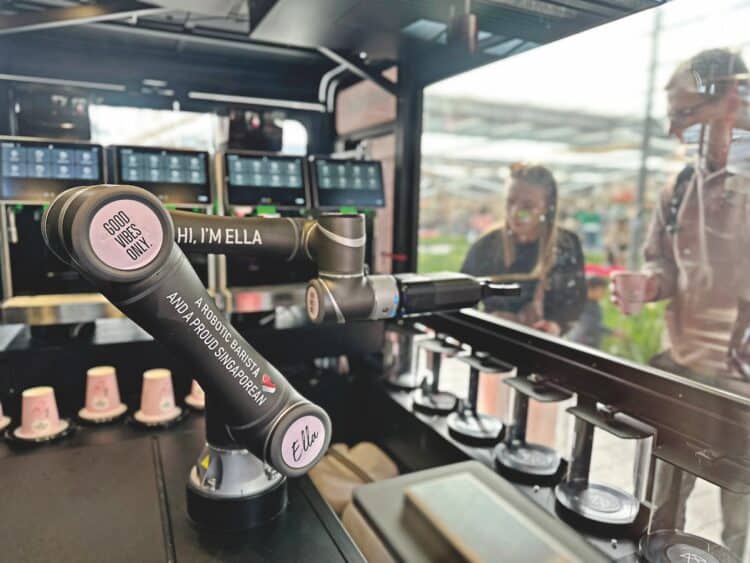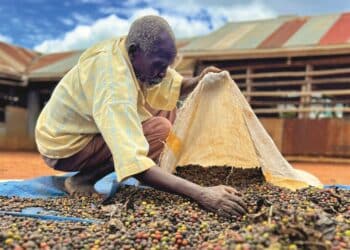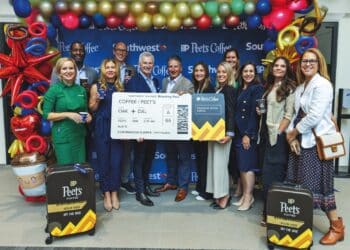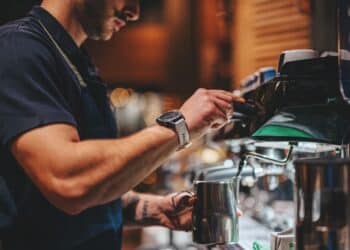Automation is becoming more commonplace in cafés and coffee service, but is new technology here to take part or take over?
Are the days of the traditional barista coming to an end? The short answer is no, but robotics and artificial intelligence stand to significantly and perhaps permanently alter the profession as we know it.
Robot baristas are on the rise. No longer restricted to the lobbies and offices of tech-forward, innovation-loving organisations, they’re becoming more commonplace in public and communal spaces, and offer a quick and easy caffeination station for those looking for a flat white or cappuccino on the go.
Asia is at the forefront of this technological innovation, but there are a range of established companies and bright-eyed startups popping up across the world angling to be the leader in the next great foodservice frontier.
Whether it be Chinese company Hi-Dolphin taking its COFE+ robots into new international markets, or Kazakhstani software engineer Ismail Karankin earning $150,000 in Silicon Valley investment for his Oli Robotics startup, the robot barista revolution is not just coming, it’s already here.
There’s also Houston’s Rice University partnering with Cerēs to place a robot barista on its business school campus, or Crown Digital’s Ella robot expanding through Singapore and Southeast Asia.
But how will this ongoing change impact the current café landscape and shift the role of the barista in the coffee experience?
The café conundrum
The ongoing skilled labour shortage in hospitality is not restricted to any single nation. It’s a problem impacting the sector all over the world, with only few potential solutions on the table.
With labour shortages often comes higher labour costs and high turnover rates, all of which continue to feed into ongoing difficulties being absorbed by the sector at large.
Keith Tan, the Singaporean entrepreneur behind Ella, initially created the robot as a solution to the labour shortage problems he was experiencing in his own cafés.
Since then, Ella has evolved to its sixth generation and is gaining traction around its native market of Singapore. The robot, whose name takes inspiration from Tan’s wife, Ellie, and the hit Rihanna song Umbrella, is now found in locations around Singapore and has expanded into the Philippines. Its technology has also been showcased in global hubs like Silicon Valley, Dubai, and Tokyo.
Tan says his understanding of cafés as a business model enabled him to build Ella to not only meet the demands of a café setup but also the demands of the customer.
“As a café owner, I understand the business and I understand my customers. My first café largely served an office crowd, so I would know ‘John’ would come in every day and want his flat white a certain style, and that never changed,” says Tan.
“‘John’ would want speed and would not want to be standing there waiting. Because I knew his order, I could see him walk in and start making the coffee. He didn’t have to say a word.
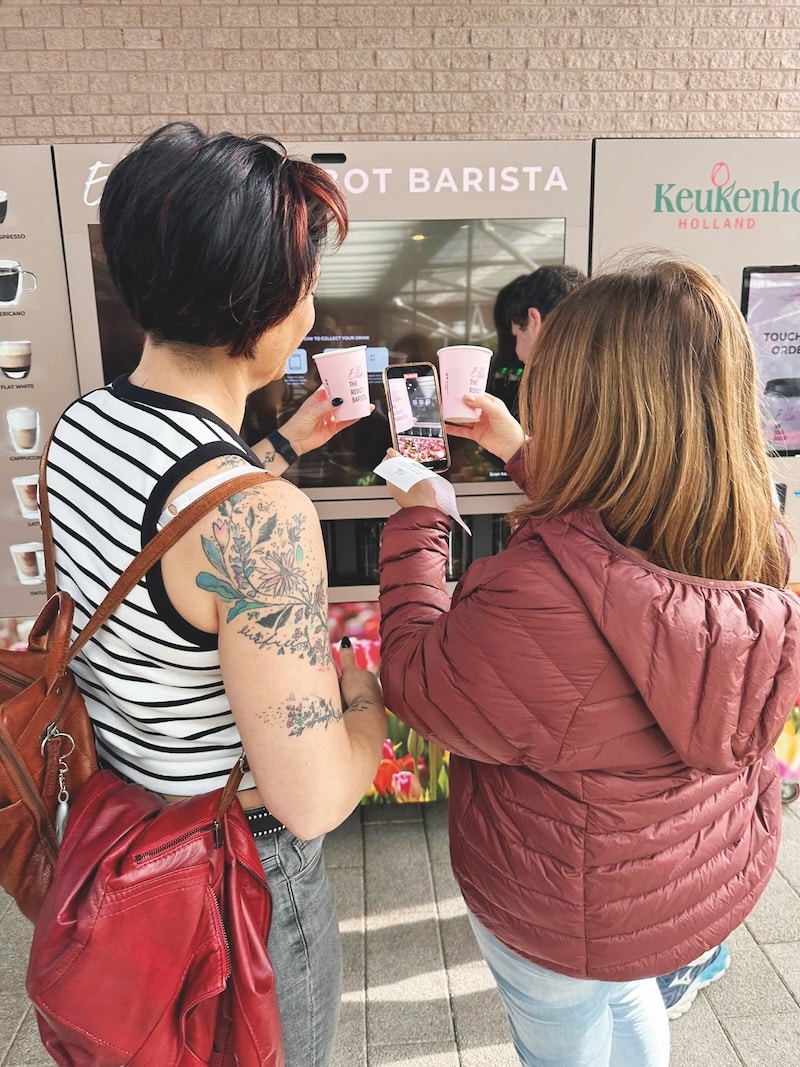
When Tan built Ella, he knew the robot had to be fast, so he integrated two Eversys Enigma machines for a total of four brew heads to make four cups simultaneously.
“Our regular customers are on the Ella app and signed on with our subscription deals. They are ordering on their phones before arriving to pick up their coffee. This convenience is where Ella really makes a difference,” he says.
“Ella isn’t just a robot, she is part of an intelligent platform that includes a proprietary mobile app, remote diagnostics, real-time analytics, and cloud orchestration.”
While coffee vending machines have already taken off around the world, Tan says the inclusion of the high-quality Enigma machines along with independently sourced products can make a fast coffee to the same standard as a barista.
“We use fresh milk and a full-bodied 20 per cent Indian washed Robusta blend we get roasted in Italy. The machine can churn out high numbers of coffees 24/7 at a consistent quality,” he says.
“The average consumer will recognise a good coffee if it’s strong enough. We found the kind of taste that hits the palate of the mass majority, and it’s a full-bodied, balanced, chocolatey taste.”
Changing the café experience
One of the most common criticisms of the incorporation of robot baristas in traditional café settings is the potential to detract from the ‘café experience’.
The coffee industry is one steeped in tradition, and for all the speed, efficiency and potential cost-saving measures a robot barista can offer, the human touch is unable to be replicated.
Former Chinese Barista Champion, Simon Sun, operates Marus Coffee and Marus Coffee Academy in Suzhou, China.
He believes while there is certainly a place for robot baristas in the global coffee landscape, their primary function remains different than that of a traditional barista at a café that promotes specialty coffee.
“I think robot baristas could be a good choice for a commercial brand that’s looking to make a significant number of coffees per day, but it is very difficult to match a specialty coffee experience,” says Sun.
“The biggest challenge is the robot barista cannot serve the emotional value to consumers when they buy something, it’s just a totally different business model.
“They are incredibly useful for high-traffic markets, but I think there are two challenges that must be considered in that we have to balance the income and the cost of the robot, and the category of products served can’t be overly complicated.”
This high-traffic location logic is no more evident than in the use of Chinese company Hi-Dolphin’s COFE+ models.
According to an automated sales pitch received by Global Coffee Report, COFE+ operates in some of China’s most famous tourist attractions including the Terracotta Warriors, Shanghai Bund, Oriental Pearl TV Tower, and East Nanjing Road, with robots that have been continuously operational for more than 1500 days.
Tan believes applications of robot baristas will soon shift from these high-traffic locations into in-house café settings, but the results will be positive for much of the existing labour force.
“People shouldn’t be worried robots are going to take away barista jobs. Highly repetitive work everywhere is being automated, so where does that leave the human labour? I believe you’re going to see human baristas really stepping up their game in the next five to 10 years,” he says.
“They are going to be the ones creating the best user experience, sourcing the best beans, creating the best drinks, and be the masters of that. Then they can teach the robot to replicate what they do.
“When it’s rush hour in a café and the barista doesn’t have time to talk to you or even look at you, there’s no human touch there. Robotics means cafés will be able to pay head baristas and high-quality creators more money to craft and curate their menu.
“I see there being a shift towards humans being able to do what humans are meant to do, which is create. Not do the repetitive tasks that can easily be achieved – often to a better standard – by automation.”
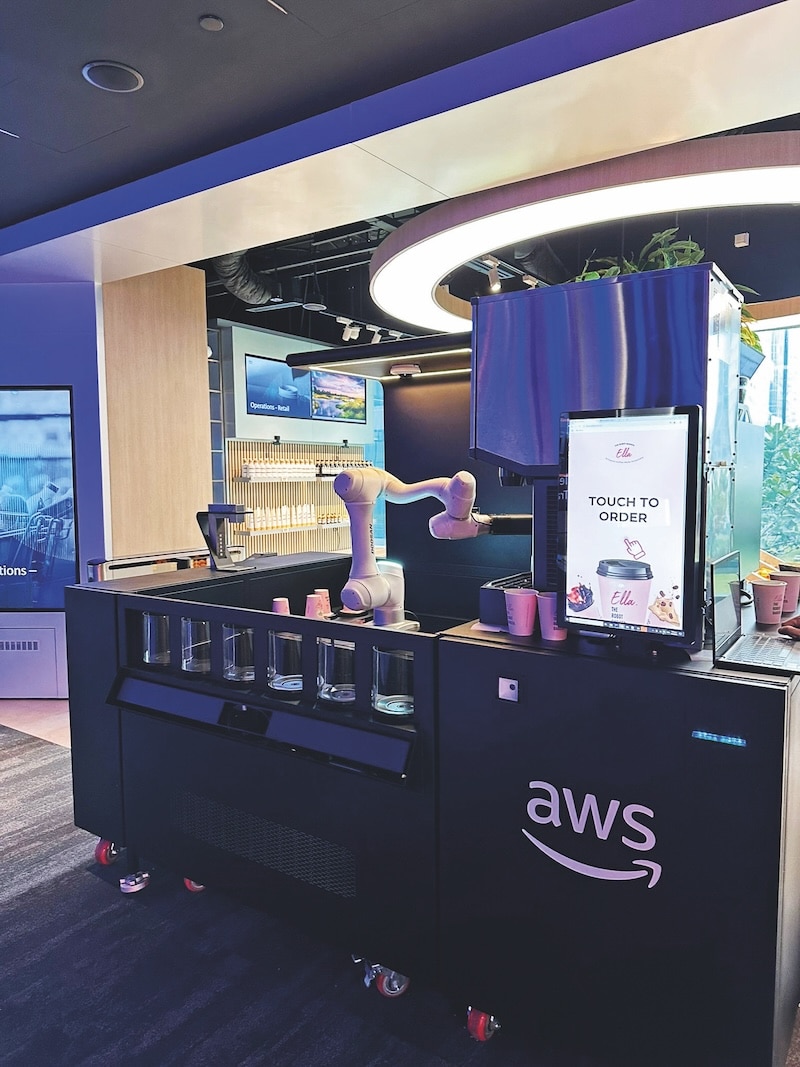
Funding the next frontier?
Cost, as mentioned by Sun, is often seen as one of the biggest restrictions for implementing robotics in any industry. In Ella’s case, the cost of the robot, Eversys machines, and everything else it needs to operate is currently north of US$100,000, but that’s coming down.
Tan admits this initial outlay is costly, but says it is dwarfed in comparison to the cost of setting up a traditional café.
“When I first built Ella, she cost about $200,000. Today, we’re close to $100,000,” he says. “As volumes increase, we will see prices dropping further, opening up adoption of robotics to a wider audience.
“I always say Ella is like a café on wheels, because you have everything you need for a café inside Ella. The only incremental part is you buy the coffee, robot, and computer.
“Let’s say you buy a top of the range machine with four brew heads, then you need to buy your grinders, fridges, point of sales system, ice machine, and you build a counter and renovate your store. That comes in at about $200,000.”
The return on investment of a robot barista, when placed in the right location and operated correctly, leans strongly in favour of automation, according to Tan.
“If you purchase a base unit for $100,000 and sell between 400 to 500 cups per day, the return on investment is about six to eight months. You will enjoy a 40 to 50 per cent net margin moving forward, while in a traditional café with labour and operational costs, that net profit is about 10 to 15 per cent.
“This is where I think automation will really thrive, in that it will increase net profits for operators.
To highlight this, he points to an Ella installed in one of Singapore’s hospitals.
“She makes about 100 cups of coffee between 12am and 6am, then another 200 cups between 6am and 9am when the morning shift comes in, so by 9am Ella has made 300 coffees in an autonomous, unmanned shop,” he says.
Human vs machine
It’s no secret that automation has been successful at streamlining operations, improving safety, and lowering costs for businesses in a range of industries.
E-commerce giant Amazon is a titan of automation in its fulfilment centres across the United States and the rest of the world, but a reported 25 per cent in cost savings has come in tandem with a drop of 50,000 total employees between 2021 and 2024.
In that time, however, the total package delivery service of the company has boomed from 5.1 billion to 6.1 billion parcels per year.
Amazon and e-commerce are not the coffee or foodservice industry though, where automation has struggled to fully embed itself in the sector to date.
Key recent examples include McDonald’s shutting down its AI drive-thru technology in July 2024 after three years of testing, while Zume Pizzam a Californian fully automated pizza parlour, closed its doors in 2023 after initially opening to great fanfare in 2015.
The challenges associated with creating success in hospitality do not necessarily lend themselves well to AI and robotics, however, those challenges are being assessed and, in some cases, overcome.
Within the unique landscape that is foodservice, coffee remains its own beast. The traditions of café culture coupled with those who thrive on the enjoyment of specialty coffee and the creativity of a skilled barista may never change, and that’s almost inimitable.
But the industry is changing, and Sun believes human and robot baristas can work together to further the coffee as a service industry around the world.
“I think robot baristas and human baristas should serve different types of coffee consumers, but both can work together in different workflow areas of daily operations,” he says.
“I think robot baristas will be the next trend in China because the volume of coffee consumption is rising incredibly fast, and big commercial chains like Luckin Coffee already prefer fully automatic machines.
“At Marus Coffee, I would honestly say we probably would not use a robot barista right now, because we are a specialty coffee brand that is very dependent on humanised services, but I cannot say we will never consider it.”
Tan says the lack of history of robotics in foodservice will only be a limiting factor for as long as there are those who oppose the change.
“It has been a challenging journey creating Ella, because robots are not found in our daily lives,” he says. “To put them into a very unstructured and dynamic work environment such as a café has taken a tremendous amount of work.
“You must rethink how technology like robots fit into a commercial environment where they previously didn’t exist, because the robots designed for factories are not designed for back of house of cafés.”

As robot barista technology continues to progress, Tan says we are only at the start line of coffee’s next great technological leap forward.
“With generative AI and large language model (LLM) reasoning, robots can be integrated with cognitive abilities and able to see, listen, reason and act. This frontier technology is enabling the rise of embodied AI-like humanoids, and we are actively working on these breakthroughs which will enable the crossover to café use,” he says.
“I think there is a massive industry disruption coming that is going to be driven by champions like me and my cohorts that are trying to solve the pressing labour problem facing cafés. We took the bold step and saw the labour challenge is not going away, and it’s going to become a bigger problem down the road unless we do something about it.
“Ella represents more than just a machine: she’s a step towards a new era of customer service where AI, robotics, and hospitality blend into one experience. We’re just getting started.”
This article was first published in the July/August 2025 edition of Global Coffee Report. Read more HERE.

